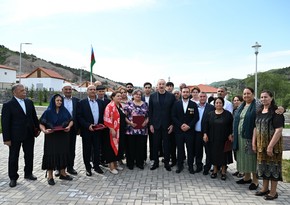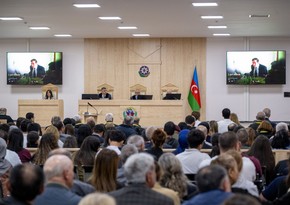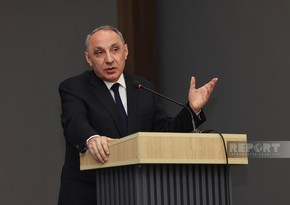Search keyword: Nagorno Karabakh
The then Nagorno-Karabakh region gained geographical link with Armenia. The notorious Lachin corridor, which no longer exists now, was opened. There has been the Lachin-Khankendi road there for many years now. The Lachin corridor belongs to the past.
He stated that the agreement would exist in two copies and declared: “The Nagorno-Karabakh Republic relies on the guarantees of the international community, the Russian Federation, the United States, and especially the President of the Republic of Armenia, Levon Ter-Petrosyan.”
In the footage, the former Armenian president said the agreement would consist of two copies and added: "The Nagorno-Karabakh Republic relies on the guarantees of the international community, the Russian Federation, the US, and especially the President of the Republic of Armenia, Levon Ter-Petrosyan.
According to Ter-Petrosyan, Armenia had resolved what he called the 600-year-old “Nagorno-Karabakh problem” thanks to the movement. He stated that both Armenia and Karabakh had been completely cleared of other nationalities.
In the video presented in court, the former president of Armenia said: "First, thanks to this movement, Armenia and Nagorno-Karabakh solved a problem that the Armenian people couldn't solve for 600 years. Armenia and Karabakh were completely cleansed of other peoples.
Back then, the Armenians who lived next to you, those who were resettled to our lands by Tsarist Russia, had a negative attitude towards us, our people, especially the Azerbaijanis who lived in the then Nagorno-Karabakh Autonomous Region.
In protest at the USSR leadership`s hypocritical policy towards the conflict that broke out in Nagorno-Karabakh, Heydar Aliyev left the Communist Party of the Soviet Union in July, 1991.
"Pashinyan's latest statement that the Minsk Group should be abolished after the signing of the peace treaty looks like a condition," he said, reminding that the group was created within the "Nagorno-Karabakh conflict": "But this issue is no longer relevant.
against peace and humanity, war crimes, including aggressive warfare, genocide, forced displacement, persecution, torture, military looting, and other illegal acts committed against Azerbaijan and the Azerbaijani people by the Armenian state and its armed forces, including the former self-proclaimed "Nagorno-Karabakh
According to Report, Aliyev emphasized that the Armenian state, its armed forces, and the self-proclaimed "Nagorno-Karabakh Republic"—which was established by Armenia in the once-occupied territories of Azerbaijan—carried out serious offenses against peace and humanity.










